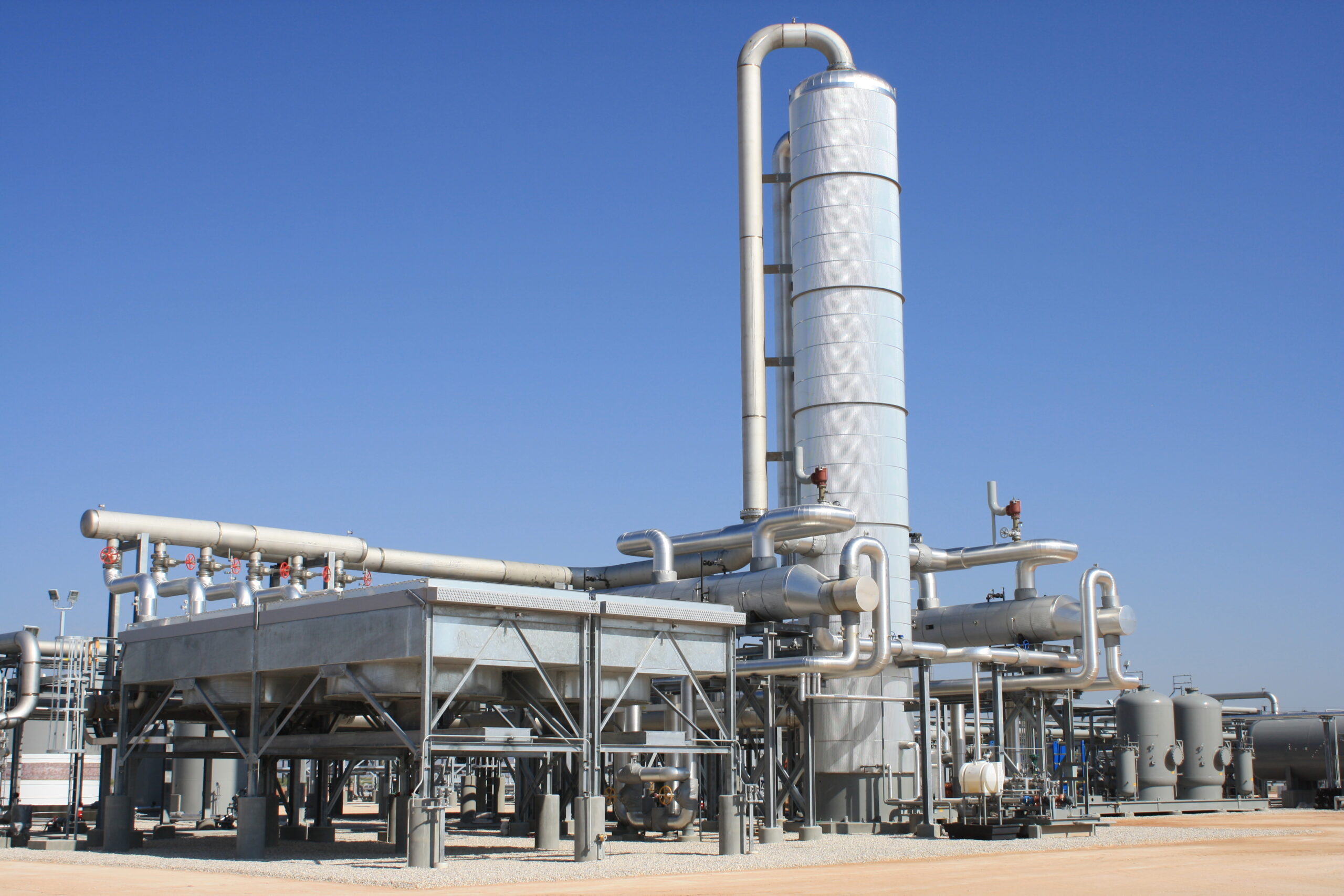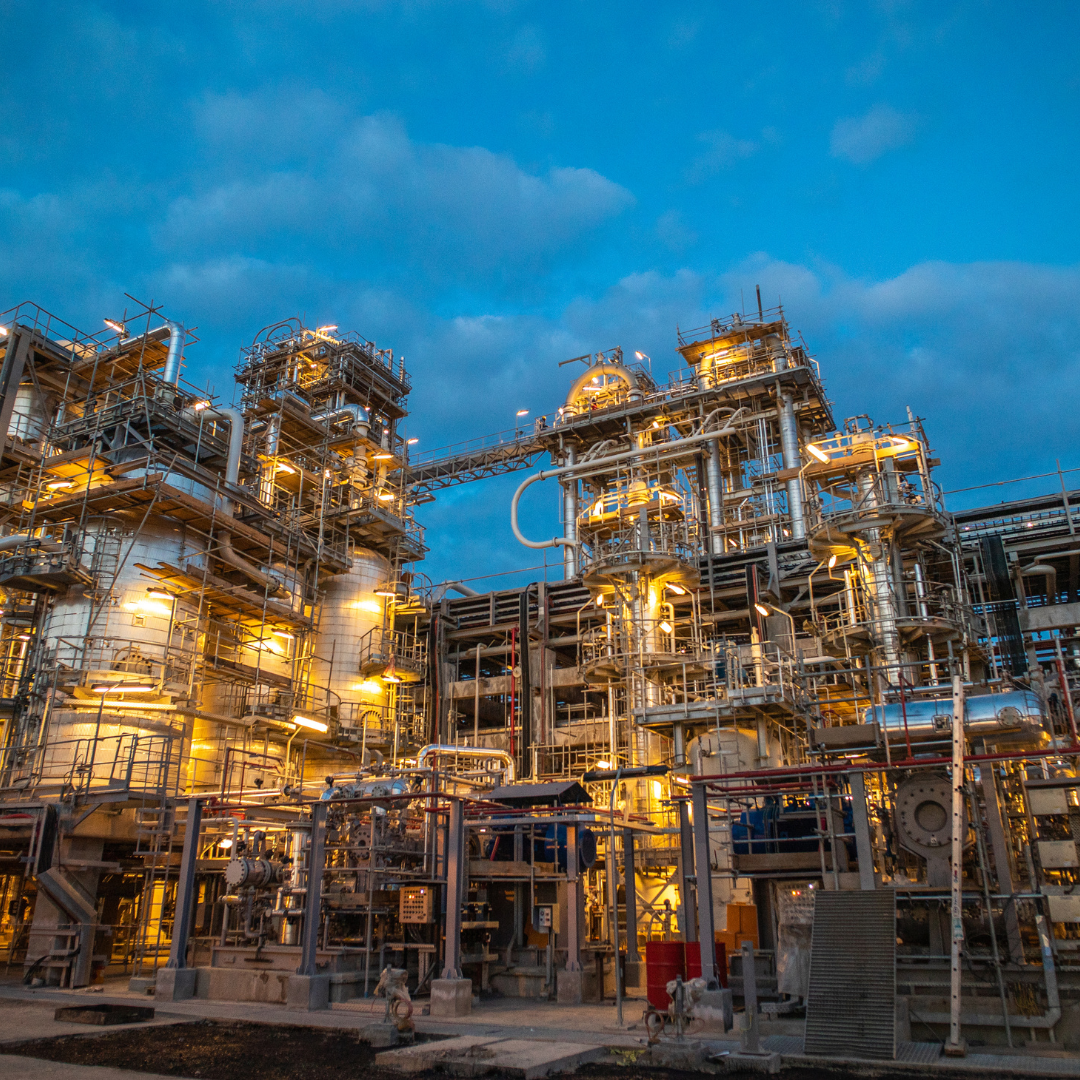Tackling Heavy Hydrocarbon Challenges in LNG Production: Cryogenic and Adsorption Technologies for HHC Removal
Liquefied Natural Gas (LNG) production involves cooling natural gas to -162°C (-260°F) to transform it into a liquid state, requiring rigorous pretreatment to remove impurities like water, carbon dioxide (CO2), hydrogen sulfide (H2S), and heavy hydrocarbons (pentanes and heavier compounds, or HHCs). For small-scale LNG (SSLNG) facilities, the presence of C5+ hydrocarbons in feed gas poses a significant challenge, as these can freeze at cryogenic temperatures, clogging equipment and disrupting operations. While traditional amine treating effectively removes acid gases, it is inadequate for HHCs, necessitating advanced solutions like cryogenic processes and adsorption technology. These methods provide efficient, cost-effective, and scalable solutions for HHC removal, ensuring compliance with stringent LNG specifications.
Cryogenic Technology for HHC Removal
Cryogenic processes are a cornerstone of HHC removal in LNG pretreatment, leveraging low temperatures to separate heavier hydrocarbons from the methane-rich gas stream. Typically, a scrub column or fractionation unit is used to make the separation, exploiting the differences in boiling points between HHCs and lighter hydrocarbons like methane. In this process:
- Condensation and Separation: The feed gas is cooled, causing C5+ hydrocarbons to condense into a liquid phase while lighter components remains gaseous. The liquid HHCs are separated in a scrub column, producing a clean gas stream suitable for liquefaction.
- Equipment Design: Cryogenic separation incorporates into the robust refrigeration units required for the liquefaction, often using nitrogen or mixed refrigerants, to achieve the required low temperatures. Precise control of temperature and pressure ensures minimal effect in the overall heat integration of the liquefaction unit.
- Operational Considerations: Cryogenic processes require significant capital investment and energy for refrigeration, but their high efficiency makes them ideal for facilities with high HHC concentrations. Reset Energy’s modular cryogenic designs reduce installation complexity, making them suitable for SSLNG applications.
This cryogenic approach ensures the gas meets LNG specifications and ensures operational reliability during liquefaction.
Adsorption Technology: A Simpler, Cost-Effective Alternative
Adsorption technology, particularly Temperature Swing Adsorption (TSA), offers a compelling alternative for HHC removal, especially for SSLNG facilities where cost and simplicity are critical. The integration of advanced adsorbent-based systems to address heavy hydrocarbons and other impurities like water, deliver tailored solutions for LNG pretreatment. Key features include:
- Adsorption Process: Specialized adsorbents selectively capture C5+ hydrocarbons and water in a fixed-bed system. The beds operate on short adsorption cycles (2-3 hours), allowing high HHC loads to be managed efficiently.
- Regeneration: During regeneration, the beds are heated to desorb HHCs and water, which are then condensed using a refrigeration system. Internal insulation in the bed design minimizes heat requirements, enhancing energy efficiency.
- Advantages: Adsorption systems require lower capital investment and operational complexity compared to cryogenic processes. They are particularly effective for SSLNG facilities with moderate HHC concentrations, offering flexibility and scalability.
- Integration: Reset’s adsorption units are designed for seamless integration with existing pretreatment systems, supported by proprietary adsorbent licensing and engineering expertise.
Reset Energy’s Expertise in HHC Removal
Reset Energy combines cryogenic and adsorption technologies to deliver comprehensive HHC removal solutions tailored to SSLNG needs. With over a decade of experience in gas processing, Reset’s capabilities include:
- Modular Systems: Compact, pre-engineered cryogenic and adsorption units reduce onsite construction time and costs, ideal for SSLNG facilities.
- FEED and Engineering Studies: Reset provides Front-End Engineering Design (FEED) studies to optimize HHC removal processes, ensuring compatibility with LNG specifications.
- Scalable Solutions: Systems are designed for a range of flow rates (30k-200k gpm for SSLNG), accommodating varying HHC concentrations and project scales.
- Proven Track Record: With extensive experience in custom process solutions, Reset ensures reliable performance and compliance with LNG standards.
Key Design Considerations for HHC Removal in LNG Pretreatment
Effective HHC removal requires careful design to balance efficiency, cost, and reliability:
- Cryogenic System Sizing: Proper sizing of refrigeration units and scrub columns minimizes energy consumption while ensuring complete HHC removal. Low-pressure drop designs enhance operational efficiency.
- Adsorption Bed Design: Multilayer adsorbent beds target specific impurities in sequence, optimizing HHC and water removal. Short cycle times and internal insulation reduce energy demands during regeneration.
- Refrigeration for Adsorption: Cooling systems condense desorbed HHCs and water, requiring precise temperature control to maintain performance without excessive energy use.
- Licensing and Support: Proprietary adsorbent and cryogenic process licensing ensures access to cutting-edge technology and expert support, guaranteeing compliance with LNG specifications.
Cryogenic and adsorption technologies are pivotal for addressing heavy hydrocarbon challenges in LNG pretreatment, particularly for small-scale facilities. Cryogenic processes offer high-efficiency HHC removal through low-temperature separation, while adsorption technology provides a simpler, cost-effective alternative with lower operational complexity. Reset Energy’s expertise in integrating these technologies ensures robust, scalable solutions that meet stringent LNG specifications, enabling SSLNG facilities to operate reliably and efficiently.
Plan an introduction meeting today
Contact our experts today to discover how our innovative solutions can tackle your complex energy challenges



